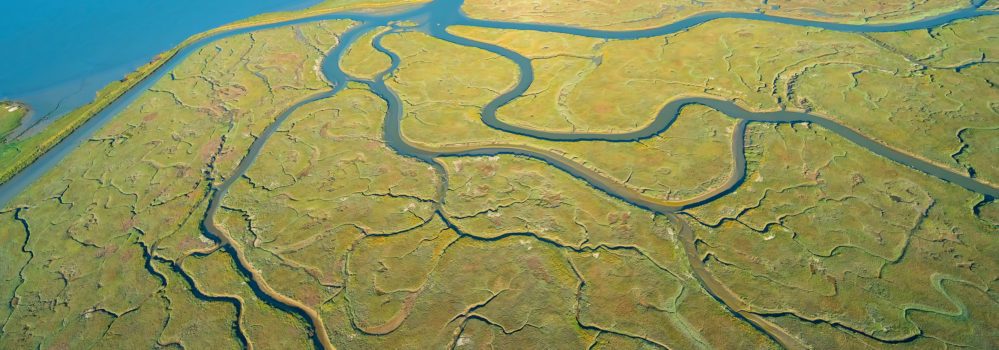
The Quinault Nation’s Ongoing Efforts to Restore Their Native Homelands
By Hira Ahmad
NOAA’s Habitat Month, a celebration each July, serves as a time to amplify and celebrate the ongoing legacy of communities across the United States working to build and restore their surrounding ecosystems to safeguard their communities’ health, wellbeing, and economic prosperity and allow them an opportunity to thrive alongside their environment.
This month of honoring environmental stewardship would be incomplete without a thoughtful recognition of the invaluable contributions of Indigenous communities across the US and worldwide to restoration efforts and protection of our natural environment and resources.
One such Nation, the Quinault People from Southwest Washington have contributed significantly to a vast array of restoration efforts, largely focused on restoring Salmon habitat and spawning grounds in the state. These watersheds remain critical to preserving salmon as a natural resource and honoring its cultural significance to this Nation and others in the region.

The continuation of a project initiated by the Quinault people with funding from the Washington Coast Restoration and Resiliency Initiative would create and maintain existing salmon habitat in addition to stabilization of the river channel through engineered log jams and planting of native tree species, which will establish and protect a mature floodplain forest.
The two-million-dollar project has a projected completion date of December 31, 2023, and is a continuation of similar restoration efforts in the region in recent years. However, this project does not mark the end of restoration initiatives for the Quinault River, and it is expected that the entirety of the restoration work may be completed in another decade, given the presence of consistent funding sources.
Other projects include the rebuilding of the side channels of the river, which would provide more area for salmon to take cover from predators, in addition to the removal of invasive species and planting of native species. The completed restoration of this river would provide substantial benefits to the Quinault Indian reservation in mitigating flood and storm risk as well as improving access to salmon resources.
The Quinault Nation has committed to countless restoration initiatives in this watershed since the early 2000’s and garnering financial support from various other agencies, including collaboration with NOAA and the Nature Conservancy to recover marine debris in tribal waters off the Washington coastline.

Developing a more robust reporting and recovery program for lost gear was also an essential facet of this project and ensured a longstanding impact that reduced the amount of debris. According to NOAA derelict crab pots can cause substantial damage by killing other marine animals, degrading the sea floor, and interfering with other fishing.
Through efforts to clean up abandoned gear, while also creating measures to track and recover lost gear before it becomes a danger to fishing and animals in the area, the Quinault Nation took a proactive and restorative approach to protect their tribal fishing grounds. These collaborative efforts with other agencies have expedited the time required to complete transformative projects in this watershed, provided additional awareness of restoration efforts, and attract funding support for future initiatives.
Acknowledging the history of restoration efforts and approaches by the Quinault nation and their impact on preserving ecosystem health in the state of Washington cannot be understated. Looking to the future, a project currently underway is a relocation plan designed to protect tribal members from the threat of sea level rise, which would significantly increase the risks of severe flooding in coastal communities – damaging homes and cultural sites, including a heritage museum, schools, and a fire station.

Building climate resilience by relocating homes and cultural sites to higher ground is an effort gaining significant traction in indigenous communities across the coastal United States. However, relocation is costly, not just financially, but emotionally as well, for tribal communities who have resided in these areas for generations. “Some residents do not want to move, the tribe has amended its zoning laws to ensure that tribal members can remain in their homes… we have to pass laws that keep our citizens out of harm’s way, and we also have to be compassionate and serve the best interests of the community.”
Looking to the future it is important to note that the U.S Forest Service has expressed that “tribal nations are amongst the most vulnerable to the impacts of a changing climate because sea level rise, erosion, and changes to water temperature and streamflow threaten their access to culturally important habitats and species and force relocation from ancestral lands”.
However, tribal nations and communities like the Quinault nation have been continuously fighting to restore their native lands, resources, and security for years and will continue to do so. Continued and increased financial and labor support for these efforts by agencies will safeguard these communities and help mitigate the strain climate change has placed on their livelihoods. As one tribal member, Ed Johnstone, stated, “We want and we need partners in this long-term project – we are unlikely to succeed without them.”

Hira Ahmad is a Master’s Candidate at the University of Michigan School of Environment and Sustainability studying Ecosystem Science and Management as well as Environmental Justice. She is particularly interested in exploring conservation through an equity-centered lens focusing on water quality issues in the Great Lakes Region.
